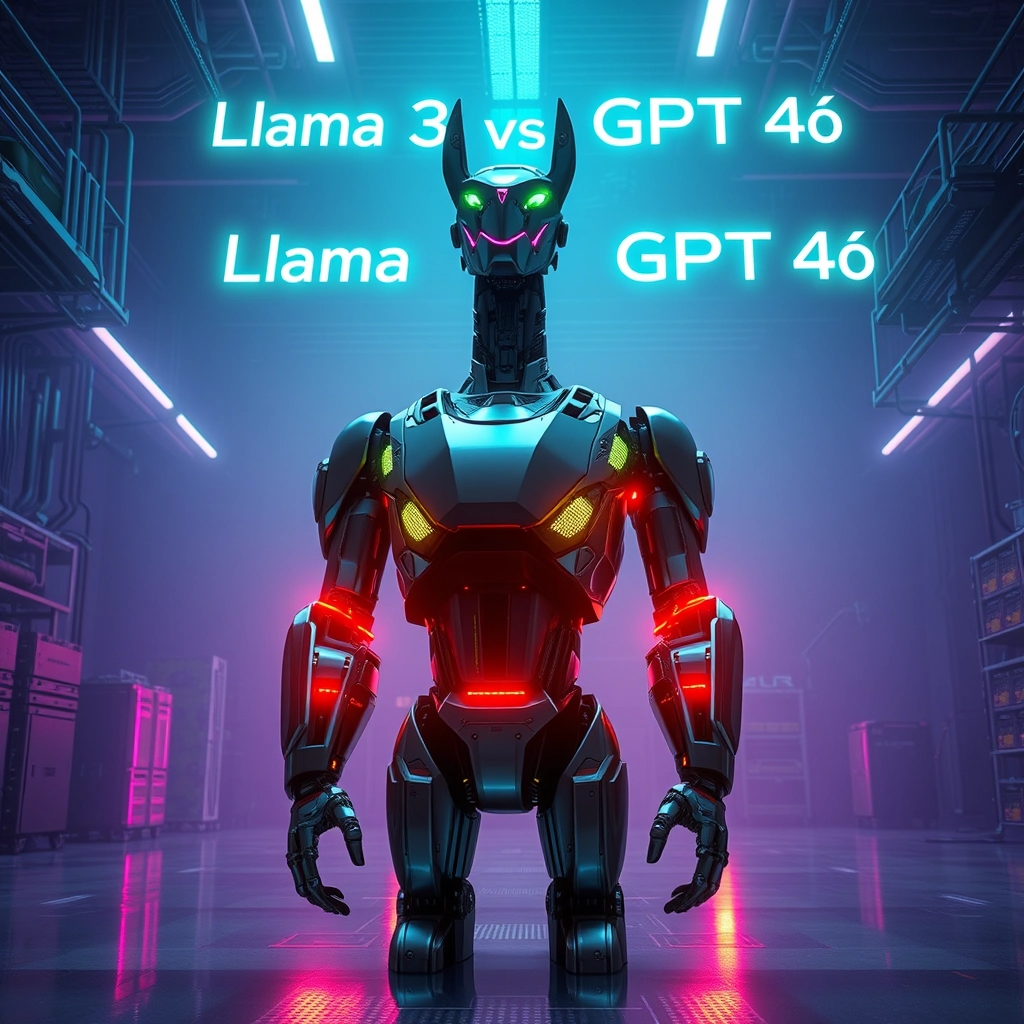A partir de septiembre de 2024, tanto Llama 3 como GPT-4o han experimentado desarrollos significativos en su rendimiento y capacidades. Este artículo proporcionará una comparación detallada basada en la información más reciente disponible, enfocándose en aspectos como el rendimiento en programación, la eficiencia de costos y las fortalezas específicas de cada tarea.
1. Rendimiento en Programación: Llama 3 vs GPT-4o
Llama 3 en Tareas de Codificación
En julio de 2024, informes de usuarios indicaron que Llama 3.1 (una versión actualizada de Llama 3) destacaba en tareas de codificación y programación. Algunos usuarios encontraron que Llama 3.1 era más preciso y receptivo que GPT-4 en escenarios específicos, particularmente en consultas relacionadas con programación. Sin embargo, estas observaciones se basan en la experiencia del usuario y pueden no representar una evaluación completa de los dos modelos.
Versatilidad de GPT-4o
GPT-4o, un modelo multimodal de OpenAI, sigue desempeñándose bien en varios dominios, incluyendo la codificación. Sin embargo, al comparar el rendimiento bruto en programación, se ha observado que Llama 3.1 ocasionalmente supera a GPT-4o en velocidad y precisión durante tareas de codificación, especialmente al tratar con scripts y funciones simples.
2. Comparación General: Llama 3 vs GPT-4o
Rendimiento y Capacidades
A partir de junio de 2024, surgieron comparaciones detalladas entre Llama 3, GPT-4 y GPT-4o, mostrando que ambos modelos son fuertes competidores en varios campos. Llama 3 es reconocido por su comprensión del lenguaje, generación de conversaciones y tareas de traducción, mientras que GPT-4o destaca en razonamiento complejo e interacciones multimodales, manejando texto, imágenes, audio e incluso video.
Aunque los detalles exactos de los puntos de referencia son limitados, estos modelos son a menudo considerados comparables en rendimiento para muchas tareas, aunque cada uno tiene fortalezas distintas dependiendo del caso de uso específico.
Fortalezas Específicas de Tareas
Llama 3, particularmente en su variante de 70 mil millones de parámetros, sobresale en manejar tareas basadas en lenguaje como GSM8K y Hellaswag, superando ocasionalmente a GPT-4o en estos dominios. En contraste, GPT-4o, diseñado para aplicaciones multimodales avanzadas, demuestra una ventaja en tareas que requieren razonamiento complejo y entradas multimodales.
3. Costo, Velocidad y Rendimiento de Tareas
Eficiencia de Costos: Llama 3 vs GPT-4o
Llama 3 ofrece ventajas significativas en costos, especialmente para desarrolladores y empresas con presupuesto limitado. Como modelo de código abierto, se informa que Llama 3 es 50 veces más barato que GPT-4 en ciertos escenarios. Además, se estima que la versión de 70 mil millones de parámetros de Llama 3 funciona 10 veces más rápido en entornos en la nube en comparación con GPT-4o, haciéndolo altamente atractivo para casos de uso que requieren alto rendimiento y baja latencia.
En contraste, GPT-4o viene con un precio más alto. A mediados de 2024, las tarifas de uso por token para GPT-4o son aproximadamente $30 por millón de tokens de entrada y $60 por millón de tokens de salida, que son considerablemente más altos que los costos de uso de Llama 3.
Desglose del Rendimiento de Tareas
- Llama 3: Más adecuado para herramientas educativas, asistentes virtuales y aplicaciones que requieren procesamiento eficiente de texto. Su naturaleza de código abierto permite personalizaciones adaptadas a necesidades específicas.
- GPT-4o: Ideal para aplicaciones que necesitan razonamiento complejo, interacción multimodal o conversaciones de voz en tiempo real. Su fortaleza radica en manejar tareas más complejas, especialmente cuando la entrada incluye imágenes o videos.
4. Modelos de Código Abierto vs Propietarios
El debate sobre si los modelos de código abierto como Llama 3 pueden igualar o superar el rendimiento de modelos propietarios como GPT-4o continúa. A principios de 2024, empresas como Meta (creadores de Llama) y Mistral han prometido entregar modelos que podrían potencialmente rivalizar con las capacidades de GPT-4o. Sin embargo, el cronograma para estos avances sigue siendo incierto, con algunos expertos dudando si alcanzarán el nivel de GPT-4o para finales del año.
5. Producto Recomendado: Chat o1
Si buscas aprovechar el poder de GPT-4o de manera práctica y fácil de usar, recomendamos Chat o1, una herramienta de chatbot de IA construida sobre las capacidades avanzadas de GPT-4o. Chat o1 proporciona una interfaz intuitiva y permite a los usuarios experimentar la funcionalidad multimodal de GPT-4o de primera mano.
Características Clave de Chat o1:
- Entrada Multimodal: Maneja texto, imágenes e incluso entradas de audio, haciéndolo versátil para una amplia gama de aplicaciones.
- Prueba Gratuita Disponible: Puedes probar Chat o1 gratis, lo que lo convierte en una excelente opción para empresas e individuos interesados en explorar el potencial de GPT-4o.
- Capacidades Avanzadas de IA: Con la capacidad de GPT-4o para procesar tareas complejas y mantener la comprensión contextual, Chat o1 ofrece experiencias conversacionales superiores.
Ya sea que estés construyendo un chatbot de atención al cliente, un asistente virtual o simplemente buscando una herramienta que pueda manejar tareas avanzadas de IA, Chat o1 es una solución altamente recomendada.
Conclusión: ¿Llama 3 o GPT-4o?
La elección entre Llama 3 y GPT-4o depende en última instancia de tus necesidades específicas. Si las restricciones de presupuesto y la eficiencia en el procesamiento de texto son tus principales preocupaciones, Llama 3 es una excelente opción. Por otro lado, si tu enfoque está en tareas complejas, entrada multimodal, y tienes el presupuesto para ello, GPT-4o podría ser una mejor opción.
Independientemente de tu elección, es importante mantenerse actualizado sobre los últimos puntos de referencia y pruebas de rendimiento de los modelos, ya que tanto Llama 3 como GPT-4o están evolucionando continuamente.
Referencias
- Informe de usuario sobre el rendimiento en codificación de Llama 3.1. Fuente disponible aquí.
- Comparación detallada entre Llama 3 y GPT-4o. Fuente disponible aquí.
- Análisis de costo y rendimiento de Llama 3 vs GPT-4. Fuente disponible aquí.
- Avances de código abierto vs modelos propietarios. Fuente disponible aquí.
